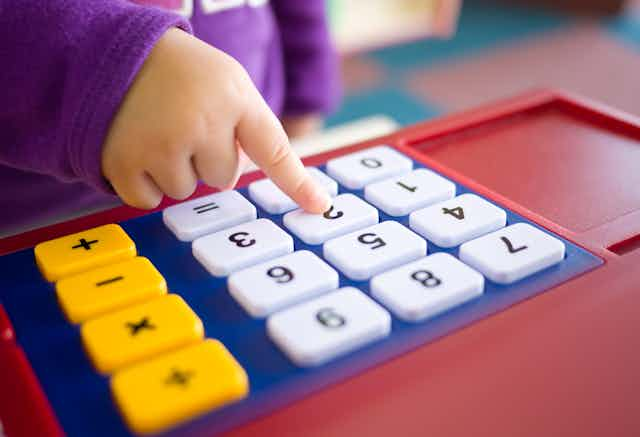At the parent-teacher conference, I sat across the table from my first grader’s teacher in a chair made for a 6-year-old. The teacher pointed to percentages scrawled in red ink. I looked and listened.
“This number,” she said, “is his Lexile score.” She went on, moving her index finger across a table created by MetaMetrics. “Here’s the range of normal for his age. So, you want to have him reading books at this level.”
Her report of his math performance proceeded in much the same way: more percentages, ranges and “levels,” sometimes calculated from different copyrighted measures.
By this point, I was having difficulty following. I silently wondered: I have a Ph.D. in Teaching and Learning, and I don’t understand what these data say about my kid. What are other parents getting out of these meetings?
When the teacher paused for a breath, I leaned as far back as the tiny chair would allow. She looked up from the cascade of worksheets, catching my gaze. I seized the moment. “Do you ever get to talk to Mac?” I asked. “I mean, do you know what he likes, what he’s interested in? That’s a good way to select books for him, based on his interests.” MetaMetrics doesn’t know what gets Mac (not his real name) excited about learning. She smiled and relaxed back into her chair, too.
It is not enough to collect data about a student. I believe that data are no substitute for building rapport with young people. And yet, elementary to high school teachers who work well with data, the ones who know how to measure and speak from percentages, are doing the job right. This is teaching in the age of “big data.”
Data-rich schools
Recent accountability pressures on schools, due to No Child Left Behind, mean teachers increasingly use student data to inform both classroom instruction and schoolwide improvement.
Just read the first paragraph of a 2009 Executive Summary from the Department of Education for a sense of the importance of data in schools:
The collection, analysis, and use of educational data are central to the improvement of student outcomes envisioned by No Child Left Behind (NCLB). The use of data in educational decision making is expected to span all layers of the education system —- from the federal to the state, district, school and classroom levels.
In a 2007 survey of 1,039 school districts across the country, the Department of Education found that 100% maintained a student information system with data points like test scores on statewide assessments, demographics, attendance and behavior.
With programs like PowerSchool, Infinite Campus and Skyward – each charging more than US$5 per child per month -— these student information systems promise a one-stop shop for tracking all aspects of a district’s student and school data.
Ideally, these systems help teachers to look at student data in teams, with other teachers and school leaders. But how teachers across various districts typically interpret, use or ignore data is still an open question.
In some districts, teachers have required data literacy trainings that show them how to interpret student data and adjust their instruction accordingly. In other districts without trainings, teachers have no cohesive plan for what to do with all this data, making the big data endeavor seem pointless.

Capturing a student’s needs
As Toni Morrison once said, “Wisdom without data is just a hunch.” Just having data about children is not equivalent to them living well, or having hopeful futures.
Often, the very opposite is true. Students get excluded from opportunities because they are perceived as “low-performing” based on limited data points. The burden is on the student to improve rather than asking how the system is failing the child.
I believe that schools should focus on developing more data wisdom – considering the power of data for building pathways to better futures. Doing so means all educators, be they parents or teachers, use data wisely: considering what it does and does not show, considering that data in the larger social context, and looking at past experiences and trends in a child’s life to thoughtfully plan for the future.
Increasingly, education research encourages teachers to expand their definitions of data to include sources beyond mandated assessments: classroom observation data, recorded one-on-one conversations with a student, and videos of how students talk and gesture while working through a math problem.
Used together, these forms of data paint a more nuanced picture of a child, capturing aspects that aren’t measured by a state-mandated test.
Parents and teachers could think of even more data points that start pointing at larger social, cultural and economic dynamics at play in a child’s day.

Mac’s Lexile score doesn’t account for his disinterest in reading about dogs in the Arctic for two weeks. But data on what Mac likes to do at home would provide complementary information on potential book topics. MetaMetrics didn’t know that Mom forgot to send his lunch to school and he refuses to eat in the cafeteria; Mac was famished when he did those math worksheets. A quick assessment on Mac’s socioemotional state before tackling math work could explain his running out of steam halfway through the test.
And Mac is a privileged white male not shouldering any stressors of racism, sexism or economic instability, daily realities for many students that are completely erased by a single metric. Quick assessments on bullying and anxiety, for instance, could meaningfully elaborate a MetaMetrics table for teachers and parents.
From there, adults, hopefully with students, could think through these complementary data points to create a plan, addressing the various reasons why reading and math aren’t going as well as everyone hopes.
Using data wisdom as a guiding principle is what serious education is about.


